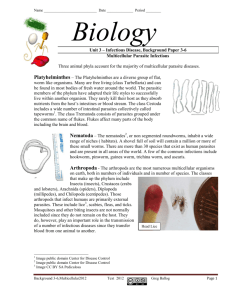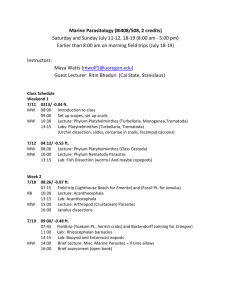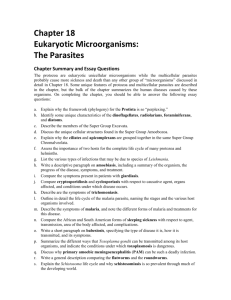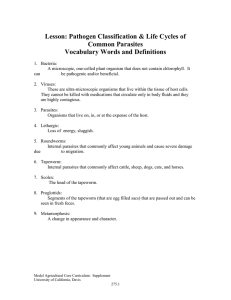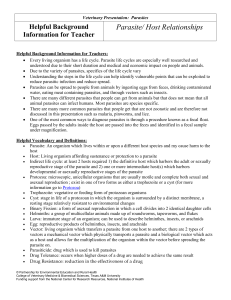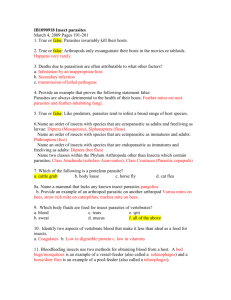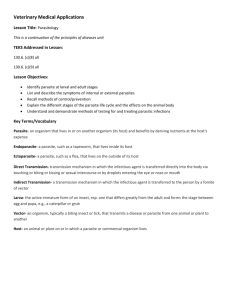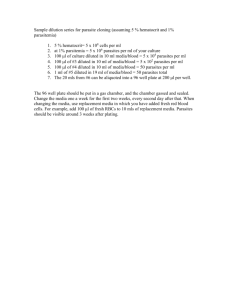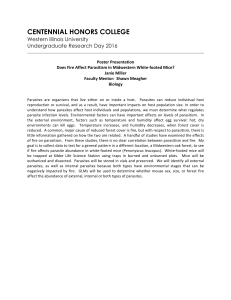parasites lab X
advertisement
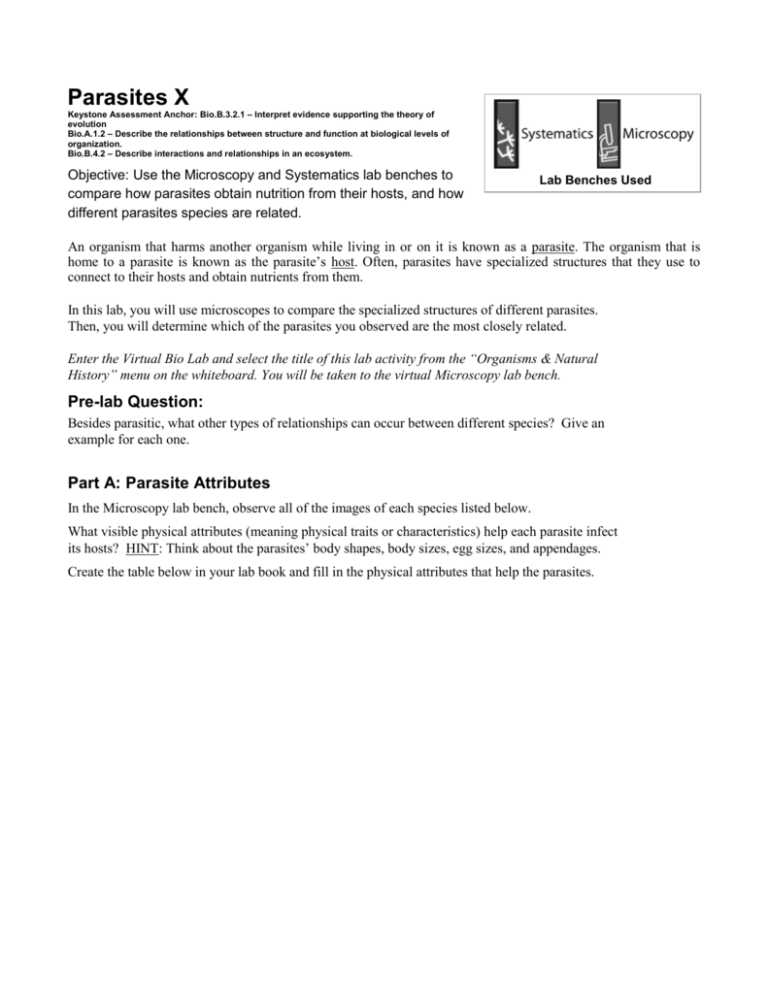
Parasites X Keystone Assessment Anchor: Bio.B.3.2.1 – Interpret evidence supporting the theory of evolution Bio.A.1.2 – Describe the relationships between structure and function at biological levels of organization. Bio.B.4.2 – Describe interactions and relationships in an ecosystem. Objective: Use the Microscopy and Systematics lab benches to compare how parasites obtain nutrition from their hosts, and how different parasites species are related. Lab Benches Used An organism that harms another organism while living in or on it is known as a parasite. The organism that is home to a parasite is known as the parasite’s host. Often, parasites have specialized structures that they use to connect to their hosts and obtain nutrients from them. In this lab, you will use microscopes to compare the specialized structures of different parasites. Then, you will determine which of the parasites you observed are the most closely related. Enter the Virtual Bio Lab and select the title of this lab activity from the “Organisms & Natural History” menu on the whiteboard. You will be taken to the virtual Microscopy lab bench. Pre-lab Question: Besides parasitic, what other types of relationships can occur between different species? Give an example for each one. Part A: Parasite Attributes In the Microscopy lab bench, observe all of the images of each species listed below. What visible physical attributes (meaning physical traits or characteristics) help each parasite infect its hosts? HINT: Think about the parasites’ body shapes, body sizes, egg sizes, and appendages. Create the table below in your lab book and fill in the physical attributes that help the parasites. Species Attributes Data Table Kingdom Phylum Bat, vampire Flea, cat Flea, human Fluke, blood Giardia Leech, medicinal Louse, human Mosquito, yellow fever Pinworm Roundworm Tapeworm Wasp, ichneumon Part B: Parasite Systematics Go to the Systematics lab bench. Choose the “6 Kingdoms” tree in the panel next to the Species Selector. Open the list of presets in the clipboard on the left side of the screen. Click on the presets for the lineages of each of the species you looked at in Part A. Fill in the Kingdom and Phylum column in the data table. 1. Which of the above parasites share a phylum? 2. Which two of the following are most closely related: medicinal leech, roundworm, pinworm, tapeworm, blood fluke? Prove how closely related they are by listing their complete classification (from Kingdom to Species). 3. At what level of classification, do the 2 organisms separate? 4. What does this tell us about a common ancestor? First, define common ancestor.


